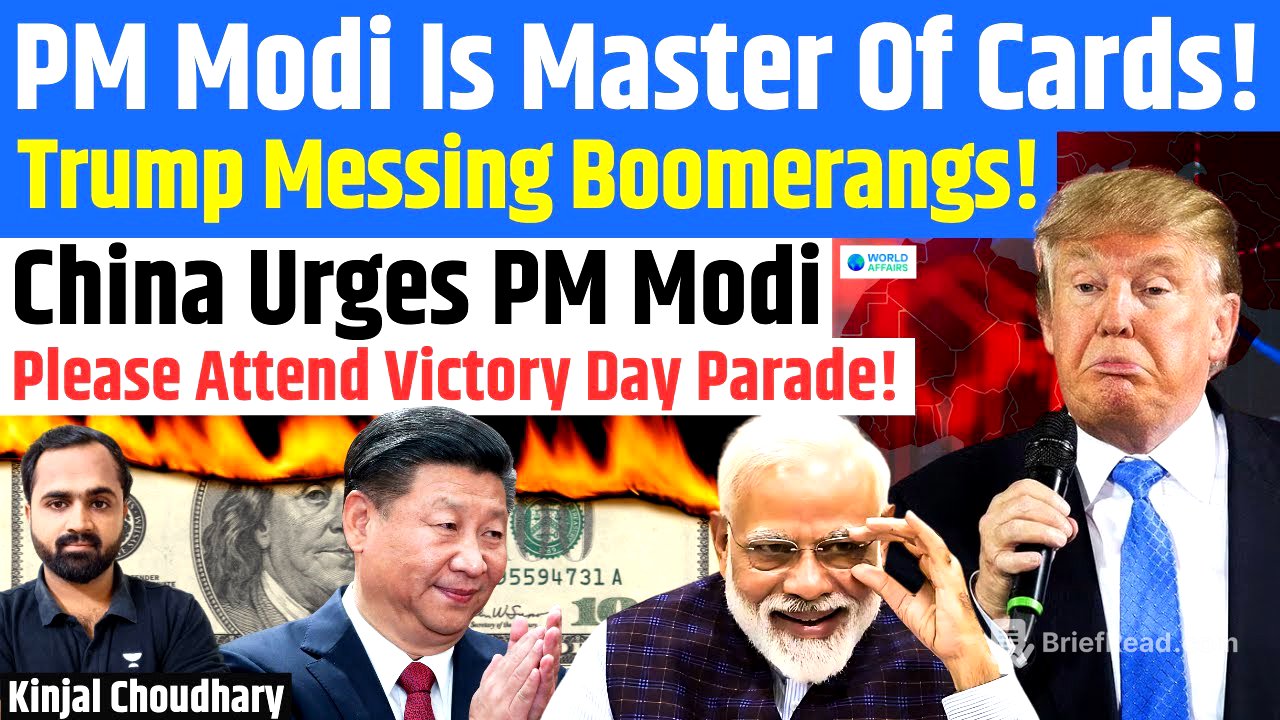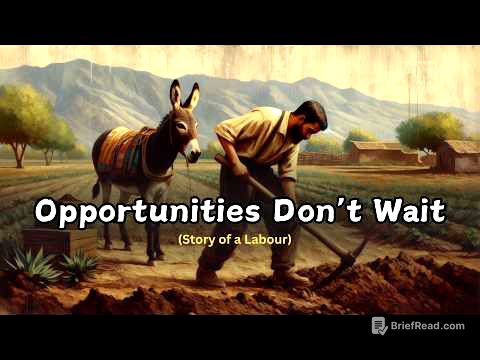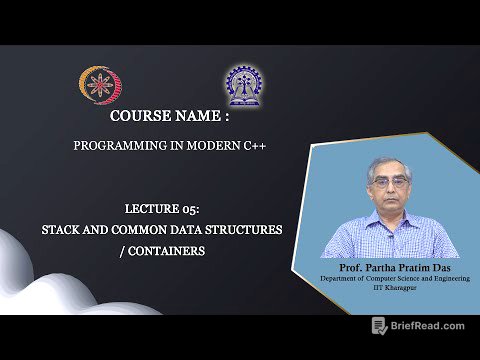TLDR;
This video analyzes the geopolitical signaling between China, India, and the United States, particularly focusing on a recent statement from Chinese media suggesting that PM Modi should attend China's Victory Day parade. The video suggests this invitation is a strategic bluff aimed at the US, warning them against alienating India. It explores the potential consequences of a closer India-China-Russia alignment, including economic and ideological shifts that could undermine US influence. The video also examines China's motivations, including leveraging the situation to negotiate better trade deals with the US and to prevent India from becoming a significant economic competitor.
- China is using the invitation as a bluff to warn the US.
- A closer India-China-Russia alignment could have significant economic and ideological consequences for the US.
- China aims to leverage the situation for better trade deals and to curb India's economic rise.
The Geopolitical Cards: PM Modi as a Master Player [0:00]
The speaker introduces the concept of geopolitical "cards," suggesting that PM Modi has become adept at playing them. The absence of India is being felt by Donald Trump, and this is having a boomerang effect. A Chinese media outlet proposed that PM Modi attend China's Victory Day parade, which is a significant indicator of potential geopolitical closeness and alignment on security matters. Such an invitation is a big deal, akin to inviting a leader to a country's Republic Day celebration, and would signal a strong alignment on security aspects.
China's Invitation to Modi: A Strategic Signal [3:52]
The Chinese media's invitation to PM Modi to attend the Victory Day Parade on September 3rd is discussed. Vijay Prasad, director of the Tricontinental Institute for Social Research, made the statement on a Chinese media outlet, suggesting that India should be included in meetings and parades with China and Russia. The Tricontinental Institute is linked to Neville Roy Singham, who has been identified as spreading Chinese propaganda globally. The invitation suggests a trilateral meeting between China, India, and Russia to resolve border disputes and end the bitterness between China and India, with Russia as a mutual partner.
Consequences for the US: Strategic, Economic, and Ideological Losses [6:09]
The speaker explains that if India aligns with China and Russia, the US would face significant strategic, economic, and ideological losses. Strategically, it would tilt the balance of power in favor of China, undermining the US's Indo-Pacific strategy. Economically, the combined might of Russia, India, and China would create a powerful economic bloc, challenging the dominance of the US dollar and Western financial institutions like the World Bank and IMF. Ideologically, it would signal the decline of the Western-led liberal international order, as India, a democratic nation, would be aligning with countries that prioritize state sovereignty over individual freedoms.
China's Gains: Economic and Strategic Advantages [10:56]
China aims to benefit economically by promoting the RIC (Russia-India-China) narrative. If India aligns with this bloc, the US would likely impose tariffs and penalties, hindering American investment in India and preventing India from becoming a significant economic competitor. China could also exploit its market dominance to prevent India's economic rise. Strategically, China uses the RIC narrative as a bargaining chip with the US, signaling that a closer alignment could occur if the US doesn't agree to favorable trade deals. Additionally, it allows China to focus on other strategic priorities like Taiwan and the South China Sea.
The Bluff Game: Risks and Realities for India [13:30]
The speaker emphasizes that the current situation is a "bluff game." Resolving the LAC (Line of Actual Control) is politically challenging. Aligning with China and Russia carries economic risks for India, including potential tariffs from the US and Europe, and could jeopardize its geo-strategic alliances with Japan and Australia. Ultimately, the news is intended to signal to US policymakers that India has options and should not be forced into a corner.









